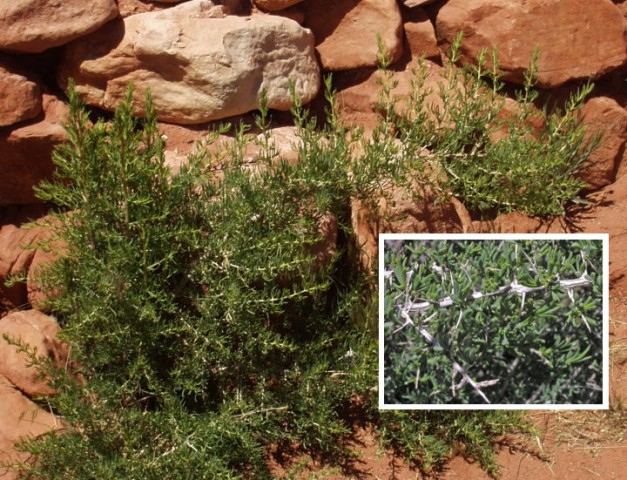Shrubbery
Greasewood
Sacobatus vermiculatus
 |
Greasewood
Sacobatus vermiculatus
Greasewoods are thorny, many branched shrubs, which grow three to
seven feet tall. The bark is white or dull gray in color. Male and female
flowers are separate, but they occur on the same plant. Rose-colored
male flowers are
arranged along a short, upright spike. The greenish female flowers are
also arranged along a short spike, shorter than the male flowers, and
have fewer flowers per spike and arise from the leaf axils.
The seeds are cup-shaped with a papery wing below.
Greasewood flowers from mid-spring through the summer.
On each plant, the male flowers mature and dry up several weeks before
the female flower forms. This ensures cross-fertilization of the flowers,
not self-pollination.
Greasewood seeds germinate only in cool temperatures.
This insures that the seeds get established before the heat of summer.
Greasewood may have long root systems that can reach down
over 50 feet to ground water.
Greasewood plants grow in alkaline or saline soils.
Often, sodium or potassium salts accumulate beneath the plant.
Greasewood grows in association with other alkaline plants such as saltbush.
Man used the tough wood for firewood or for tool.
The Hopi made planting sticks from straight stems.
Native Americans ate the seeds and succulent leaves;
the plants have a somewhat salty flavor.
Livestock utilize greasewood for winter and early spring browse.
Some wildlife species forage on the plant. The plant provides burrowing
or resting sites for small mammals or birds.
|